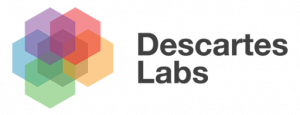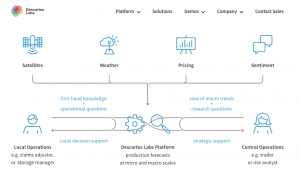Opportunity:
The newspaper industry represents a huge opportunity, with 2.7B print readers and 1.3B digital readers worldwide. In the U.S. alone, newspaper publishing was a $24B industry in 2018 and magazine and periodical publishing was a $28B industry in 2017, and this doesn’t even take into account news from other sources such as online-only publications. However, people have been increasingly concerned with bias in the news, with 72% of U.S. adults stating that news organizations “tend to favor one side” when presenting the news on political and social issues. Only 20% and 5% of U.S. adults trust information “a lot” from national news organizations and social media, respectively. The desire for unbiased news carries beyond the United States, as globally a median of 75% across 38 countries state it is “never acceptable” for a news organization to favor one political party over others.
Solution:
To solve news bias issues, Knowhere uses machine learning and artificial intelligence to ultimately produce news stories written by machines. To do so, Knowhere’s algorithm selects topics based on what is most popular on the internet. The system then reads thousands of articles on the topic (from a combination of left wing and right wing sources) to gather data and writes an article on the topic based on what it finds. The technology strives to removes any bias, and presents information based solely on facts, while still reading like an article written by a journalist. Knowhere also weighs the accuracy of the sources it is using, making sure to weigh more accurate sources more heavily.
For political topics, Knowhere also produces “left” and “right” versions of each article so users can pick which they prefer, as well as compare different tones and viewpoints. Ultimately, two human editors review each article before it is published by Knowhere.
Challenges and Competition:
Most competitor companies (such as Google and Wikipedia) are focusing on mitigating the issue of fake news and increasing accuracy, while Knowhere is focused on the issue of removing bias. One of the challenges Knowhere may face is the fact that people often like to read biased information and fall privy to confirmation bias. They may not be open to trusting sources that offer perspectives different from theirs. Additionally, while Knowhere is taking strides to reduce bias, the company as a whole and its algorithms were created by humans, which means that there is inherently bias in the structure of the system. Finally, Knowhere may face challenges in respect to making money. Most news sites make money through targeted advertising, but theoretically, Knowhere is looking to reach an audience through unbiased information, which makes targeting toward a specific group less useful.
Suggestions/Improvements:
Knowhere aggregates and filters news but does not create original journalism and relies completely on the work of others. It is currently not clear how Knowhere can best monetize their service. Objective news feed that targets all internet users will not generate individual user data that can be used for advertising targeting. Knowhere can offer paid consulting services that will help other news providers become more accurate or at least make them aware of how they stack in comparison with their competitors. That service may be of interest to chief editors who can benefit from understanding the biases of the journalists who work for them. As such, it can aid hiring decisions in the publishing industry. Finally, publishers can make the service available to their writers to increase their productivity.
Another challenge is to make the Knowhere content more widely available. To increase consumer awareness for their service, Knowhere can publish an index of accuracy for news sources. It can publicize the index through partnering with parties such as Wikipedia, Firefox, Google, or other interest and advocacy groups. Further, Knowhere should develop an app with the ability to set alerts for different topics. One of their areas of focus are complicated issues that are likely to have follow up coverage. The alerts can help retain the attention of users who liked a Knowhere article on the topic. Knowhere can add key word labels and a “Topics” section. Thus, a user who is newly interested in a topic, can easily access the universe of articles that Knowhere has already published on that topic. They can also make sharing easier and add buttons that allow users to email articles (the current options are only to share through Facebook and Twitter). Finally, they can add a “Local News” section that can draw in additional users.
Sources:
- Pew Research Center. Publics Globally Want Unbiased News Coverage, but Are Divided on Whether Their News Media Deliver. January 11, 2018.
- Pew Research Center. Americans’ Attitudes About the News Media Deeply Divided Along Partisan Lines. May 10, 2017.
- Statista Report. Newspaper industry in the U.S.
- IBISWorld Industry Report. Newspaper Publishing in the US. February 2018.
- IBISWorld Industry Report. Magazine & Periodical Publishing in the US. September 2017.
- https://knowhere.ai/about/product
- https://futurism.com/ai-journalist-media-bias-news-knowhere/
- “Wikipedia founder tackles fake news with Wikitribune,” https://phys.org/news/2017-04-wikipedia-jimmy-wales-tackles-news.html?utm_source=TrendMD&utm_medium=cpc&utm_campaign=Phys.org_TrendMD_1
- “Google pushes artificial intelligence for upgraded news app,” https://phys.org/news/2018-05-google-artificial-intelligence-news-app.html?utm_source=TrendMD&utm_medium=cpc&utm_campaign=Phys.org_TrendMD_1



